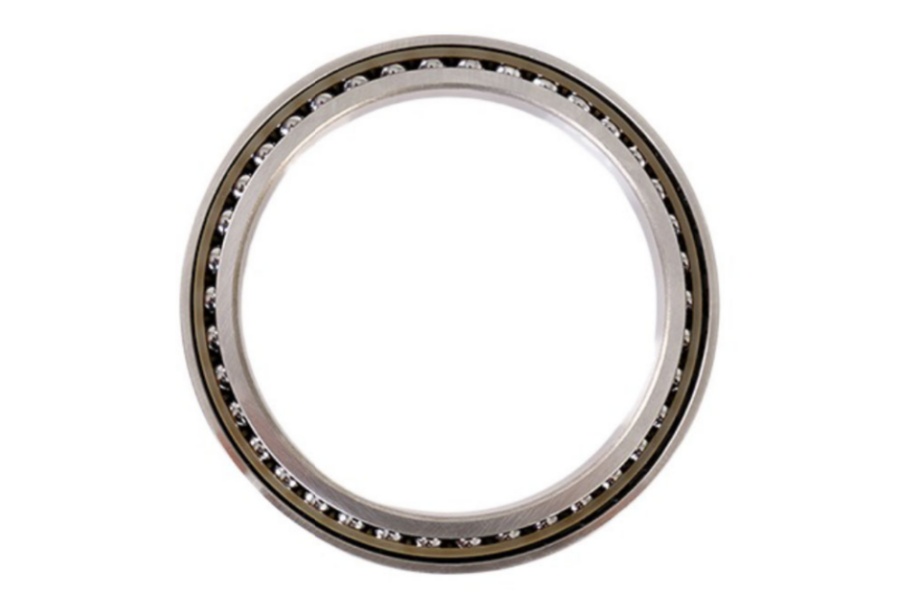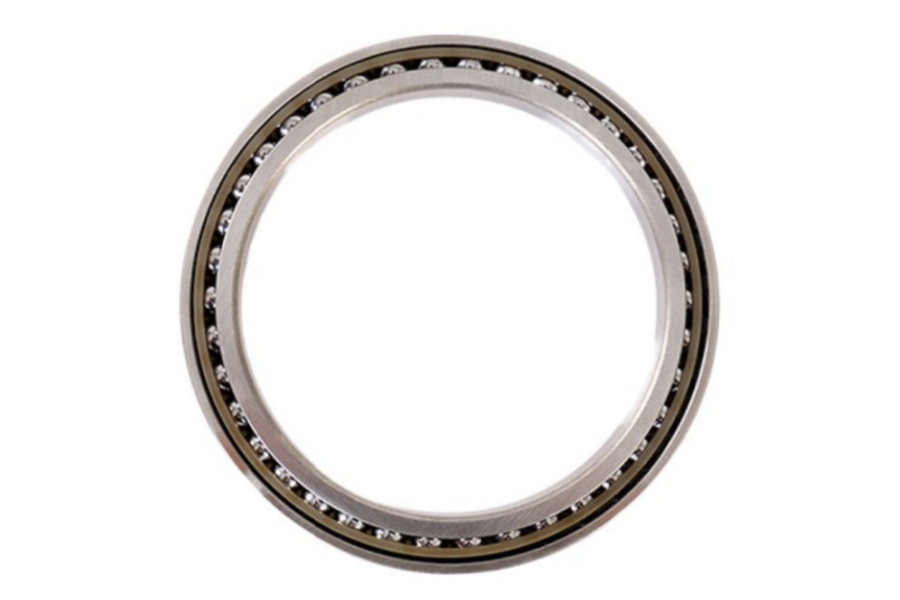
Why Gear Grinding Is Essential For Slewing Bearings
What Is A Slewing Bearing?
Slewing Bearing, also known as a turntable bearing or slewing ring, is a highly engineered rotational bearing designed to handle exceptionally heavy axial, radial, and moment loads simultaneously. Unlike conventional bearings, slewing bearings feature large diameters and integral gear teeth (either internal or external) machined directly onto one of their raceways. This integrated gearing allows them to transmit rotational motion efficiently, eliminating the need for separate, complex drive systems. Their robust construction typically comprises inner and outer rings, rolling elements (balls or rollers), spacers, and seals, forming a complete rotational assembly fundamental to machinery requiring controlled, heavy-duty rotation. Achieving the necessary material properties and precision for these large components involves sophisticated heat treatment processes before final gear finishing.

Foundational Heat Treatment Processes for Slewing Bearings
The exceptional performance of slewing bearings starts long before gear grinding, with precise thermal processing shaping the material's properties:
Annealing: Heats the slewing bearing forging to a specific temperature for an extended period, followed by slow cooling. Its primary goals are releasing residual forging stresses, increasing toughness, reducing hardness for easier machining, improving internal microstructure, and refining grain structure to enhance overall mechanical properties.
Normalizing: Involves heating the forging above the AC3 temperature (typically 30-50°C higher), holding it, then cooling it rapidly using air blasts, water spray, or mist (not furnace cooling). This faster cooling rate refines the grain structure more effectively than annealing, leading to more uniform grain distribution, improved mechanical properties, and significantly enhanced machinability.
Aging (Stress Relieving): Stabilizes machined bearing rings by allowing internal stress release and dimensional settling. This occurs either at room temperature (natural aging) or elevated temperatures (artificial aging, typically around 150°C for ~12 hours). Precision bearings often undergo aging after every major machining or heat treatment step to prevent distortion, ensure dimensional stability, and guarantee final accuracy. This meticulous process is vital for preventing in-service deformation.
Quenching and Tempering (Q&T / "Conditioning"): A two-step process applied after rough machining. The component is quenched (heated to ~850°C, held, then rapidly cooled in oil or water), followed by high-temperature tempering (reheating to ~630°C, holding, then air cooling). This imparts an optimal balance of high strength, toughness, ductility, and improved machinability – essential for the core material properties of the bearing rings.
Hardening (Surface/Induction Hardening): Selectively heats critical surfaces (raceways, gear teeth) to high temperatures followed by immediate quenching. This creates a hard, wear-resistant surface layer while maintaining a tough, impact-resistant core. Hardening dramatically increases raceway durability and gear tooth strength but inevitably introduces geometric distortion.
Nitriding: Diffuses nitrogen atoms into the metal surface at relatively low temperatures (compared to hardening), forming a hard nitride layer. It significantly enhances surface hardness, wear resistance, fatigue strength, and corrosion resistance with minimal distortion. Due to its shallow case depth (typically <0.7mm) and low distortion, nitriding is often one of the final manufacturing steps, requiring precise stress relieving beforehand.
Why Grind The Gears On Slewing Bearings?
The hardened teeth on a slewing bearing's raceway are critical for torque transmission. Processes like surface/induction hardening (step 5) or nitriding (step 6) are essential for imparting the necessary strength, hardness, and wear resistance.
However, hardening (especially induction hardening) induces significant distortion. The intense thermal cycling causes the raceway to warp, often becoming elliptical. This distortion drastically degrades the initial precision of the machined gear teeth. For applications demanding high positional accuracy, smooth motion, minimal vibration, and quiet operation, this distortion is unacceptable. Standard gear cutting (hobbing, shaping) cannot effectively machine this hardened, distorted surface; hardened material rapidly damages conventional cutting tools.
Precision gear grinding is the indispensable solution. It employs abrasive grinding wheels to meticulously remove material from hardened gear teeth. Its key purposes are:
Achieving High Precision: Restoring and exceeding geometric accuracy (profile, lead, pitch) after hardening-induced distortion.
Achieving Superior Surface Finish: Producing an ultra-smooth surface (Ra 0.8 μm or better), reducing friction and wear.
Minimizing Runout: Reducing gear tooth runout to 0.03-0.1 mm, ensuring concentric rotation.
Correcting Distortion: Actively compensating for specific warpage from heat treatment.
Enhancing Meshing: Ensuring optimal contact with the driving pinion for smooth operation, reduced noise/vibration, and longevity.
Grinding transforms a hardened, distorted gear into a precise, reliable component. Without it, high-accuracy slewing bearings suffer premature wear, noise, vibration, and potential failure.
Key Characteristics Of Slewing Bearings
Slewing Bearings are defined by unique characteristics enabling demanding performance:
Combined Load Capacity: Supports massive axial, radial, and moment loads simultaneously.
Integrated Precision Gearing: Features hardened and ground gear teeth as an intrinsic part of the ring.
Large Diameter & Compact Design: High load capacity within a space-efficient envelope.
Robust Construction: High-strength alloy steels with substantial cross-sections.
Customization: Highly configurable (gear type/location, seals, lubrication, mounting, rolling elements).
Precision Rotation: Ground gears enable precise control and positioning.
Low Maintenance: Integrated seals and lubrication channels for extended service (regular maintenance still vital).
Diverse Applications Of Slewing Bearings
Essential for heavy machinery requiring robust, precise rotation:
Construction & Mining: Excavators, cranes, drill rigs, tunnel borers.
Wind Energy: Yaw and pitch drives on turbines.
Material Handling: Port cranes, forklifts, automated warehouses.
Industrial Machinery: Welding positioners, indexing tables, steel ladle turrets.
Military & Aerospace: Radar platforms, turrets, launchers.
Medical: Heavy-duty imaging equipment components.
Solar Tracking: Precise panel positioning.
Agriculture: Large harvesters and sprayers.
Factors Influencing Slewing Bearing Price
Cost is driven by complexity and quality requirements:
Size & Dimensions: Diameter is a primary cost driver.
Load Capacity & Design: Higher loads and complex geometries increase cost.
Gear Specifications & Grinding: Integrated gears, especially requiring precision grinding, add significant expense.
Material & Heat Treatment: High-grade alloy steels and extensive thermal processing (Annealing, Normalizing, Q&T, Hardening, Nitriding, Aging) are major cost factors.
Precision Requirements: Tighter tolerances demand advanced manufacturing and inspection.
Rolling Elements: Rollers cost more than balls but handle higher moments.
Seals & Lubrication: Type and complexity impact cost.
Mounting Hardware & Finishes: Included hardware and special coatings add cost.
Quantity & Customization: Economies of scale; custom designs cost more.
Manufacturer & Quality: Reputable suppliers with advanced capabilities command higher prices, reflecting reliability and longevity.
Partnering With A Trusted Slewing Bearing Manufacturer
LYRADRIVE specializes in manufacturing high-performance slewing bearings where precise heat treatment is paramount. They utilize controlled atmosphere furnaces for core conditioning (Q&T), advanced induction hardening systems for raceways and gears, and offer nitriding for applications demanding exceptional wear resistance and minimal distortion. LYRADRIVE implements rigorous process controls and metallurgical testing to ensure each heat treatment stage achieves specified hardness profiles, microstructure, and dimensional stability. Their expertise covers bearings for construction, renewable energy, and heavy industrial equipment requiring proven durability under demanding conditions. For components where heat treatment defines performance and lifespan, contact LYRADRIVE to discuss process specifications and material solutions.


